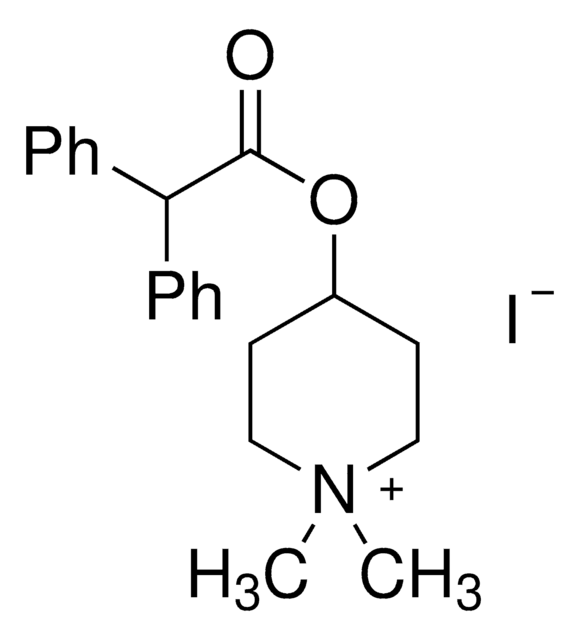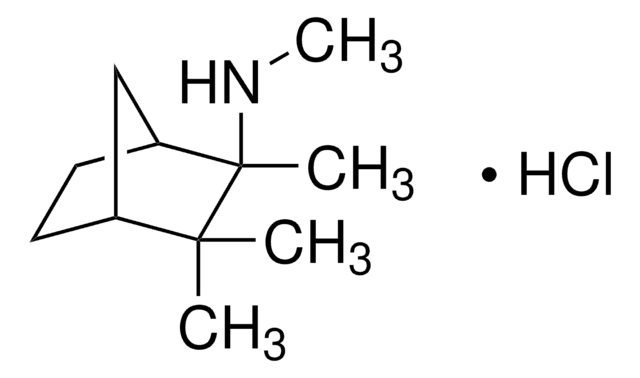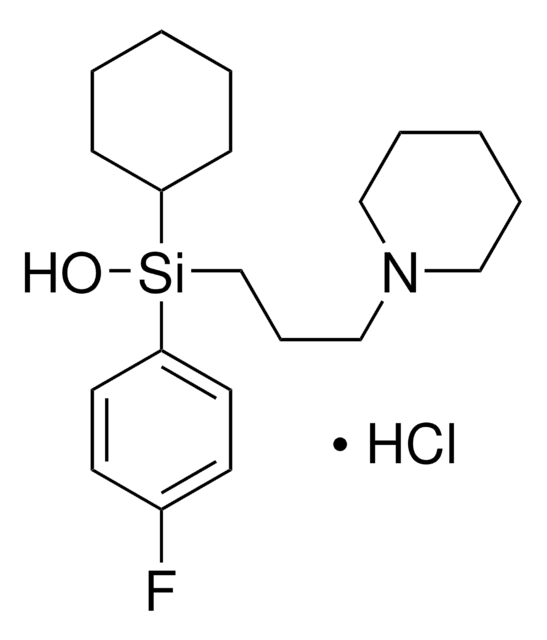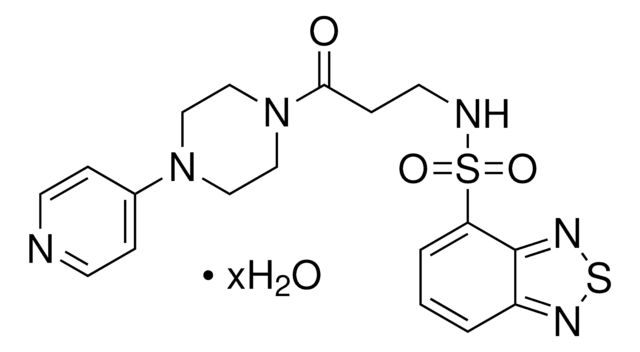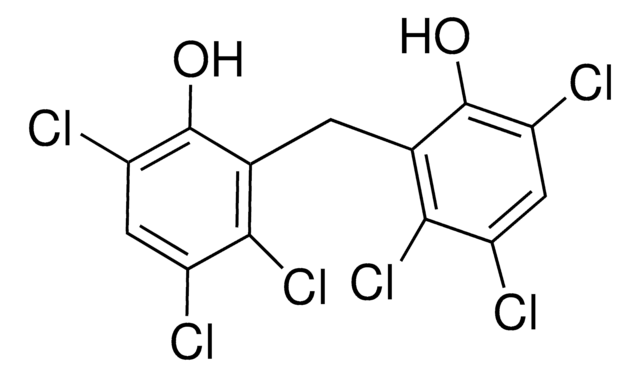M105
Methoctramine hydrate
≥97% (NMR), solid
Synonym(s):
Methoctramine tetrahydrochloride hydrate, N,N′-bis[6-[[(2-Methoxyphenyl)methyl]amino]hexyl]-1,8-octane diamine tetrahydrochloride hydrate
About This Item
Recommended Products
Assay
≥97% (NMR)
form
solid
color
white
solubility
H2O: >20 mg/mL
storage temp.
2-8°C
SMILES string
O.Cl.Cl.Cl.Cl.COc1ccccc1CNCCCCCCNCCCCCCCCNCCCCCCNCc2ccccc2OC.COc3ccccc3CNCCCCCCNCCCCCCCCNCCCCCCNCc4ccccc4OC
InChI
1S/2C36H62N4O2.4ClH.H2O/c2*1-41-35-23-13-11-21-33(35)31-39-29-19-9-7-17-27-37-25-15-5-3-4-6-16-26-38-28-18-8-10-20-30-40-32-34-22-12-14-24-36(34)42-2;;;;;/h2*11-14,21-24,37-40H,3-10,15-20,25-32H2,1-2H3;4*1H;1H2
InChI key
XIIINYPADNNZHA-UHFFFAOYSA-N
Gene Information
human ... CHRM2(1129)
General description
Application
- As a muscarinic receptor 2 antogonist.
- As a test molecule to check its effect on premature osteogenic differentiation of HGPS (Hutchinson-Gilford progeria syndrome) iPS (induced pluripotent)-derived mesenchymal stem cells.
Biochem/physiol Actions
Storage Class Code
11 - Combustible Solids
WGK
WGK 3
Flash Point(F)
Not applicable
Flash Point(C)
Not applicable
Personal Protective Equipment
Choose from one of the most recent versions:
Already Own This Product?
Find documentation for the products that you have recently purchased in the Document Library.
Customers Also Viewed
Our team of scientists has experience in all areas of research including Life Science, Material Science, Chemical Synthesis, Chromatography, Analytical and many others.
Contact Technical Service